
The ITU Telecommunication Standardization Sector (ITU-T) is one of the three Sectors (branches) of the International Telecommunication Union (ITU). It is responsible for coordinating standards for telecommunications and Information Communication Technology such as X.509 for cybersecurity, Y.3172 and Y.3173 for machine learning, and H.264/MPEG-4 AVC for video compression, between its Member States, Private Sector Members, and Academia Members.

Noise is unwanted sound considered unpleasant, loud or disruptive to hearing. From a physics standpoint, there is no distinction between noise and desired sound, as both are vibrations through a medium, such as air or water. The difference arises when the brain receives and perceives a sound.

Hearing loss is a partial or total inability to hear. Hearing loss may be present at birth or acquired at any time afterwards. Hearing loss may occur in one or both ears. In children, hearing problems can affect the ability to acquire spoken language, and in adults it can create difficulties with social interaction and at work. Hearing loss can be temporary or permanent. Hearing loss related to age usually affects both ears and is due to cochlear hair cell loss. In some people, particularly older people, hearing loss can result in loneliness. Deaf people usually have little to no hearing.
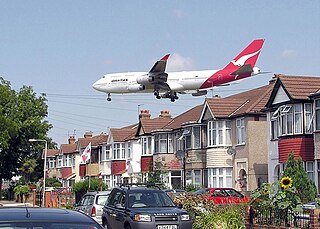
Noise pollution, or sound pollution, is the propagation of noise or sound with ranging impacts on the activity of human or animal life, most of which are harmful to a degree. The source of outdoor noise worldwide is mainly caused by machines, transport, and propagation systems. Poor urban planning may give rise to noise disintegration or pollution, side-by-side industrial and residential buildings can result in noise pollution in the residential areas. Some of the main sources of noise in residential areas include loud music, transportation, lawn care maintenance, construction, electrical generators, wind turbines, explosions, and people.

Headphones are a pair of small loudspeaker drivers worn on or around the head over a user's ears. They are electroacoustic transducers, which convert an electrical signal to a corresponding sound. Headphones let a single user listen to an audio source privately, in contrast to a loudspeaker, which emits sound into the open air for anyone nearby to hear. Headphones are also known as earphones or, colloquially, cans. Circumaural and supra-aural headphones use a band over the top of the head to hold the speakers in place. Another type, known as earbuds or earpieces consist of individual units that plug into the user's ear canal. A third type are bone conduction headphones, which typically wrap around the back of the head and rest in front of the ear canal, leaving the ear canal open. In the context of telecommunication, a headset is a combination of headphone and microphone.

A hearing aid is a device designed to improve hearing by making sound audible to a person with hearing loss. Hearing aids are classified as medical devices in most countries, and regulated by the respective regulations. Small audio amplifiers such as personal sound amplification products (PSAPs) or other plain sound reinforcing systems cannot be sold as "hearing aids".

An earplug is a device that is inserted in the ear canal to protect the user's ears from loud noises, intrusion of water, foreign bodies, dust or excessive wind. Since they reduce the sound volume, earplugs are often used to help prevent hearing loss and tinnitus.
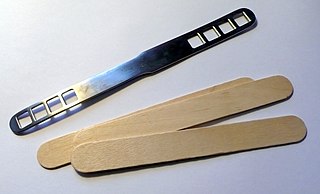
A medical device is any device intended to be used for medical purposes. Significant potential for hazards are inherent when using a device for medical purposes and thus medical devices must be proved safe and effective with reasonable assurance before regulating governments allow marketing of the device in their country. As a general rule, as the associated risk of the device increases the amount of testing required to establish safety and efficacy also increases. Further, as associated risk increases the potential benefit to the patient must also increase.
In acoustics, noise measurement can be for the purpose of measuring environmental noise or measuring noise in the workplace. Applications include monitoring of construction sites, aircraft noise, road traffic noise, entertainment venues and neighborhood noise. One of the definitions of noise covers all "unwanted sounds". When sound levels reach a high enough intensity, the sound, whether it is wanted or unwanted, may be damaging to hearing. Environmental noise monitoring is the measurement of noise in an outdoor environment caused by transport, industry and recreational activities. The laws and limits governing environmental noise monitoring differ from country to country.

Noise-induced hearing loss (NIHL) is a hearing impairment resulting from exposure to loud sound. People may have a loss of perception of a narrow range of frequencies or impaired perception of sound including sensitivity to sound or ringing in the ears. When exposure to hazards such as noise occur at work and is associated with hearing loss, it is referred to as occupational hearing loss.
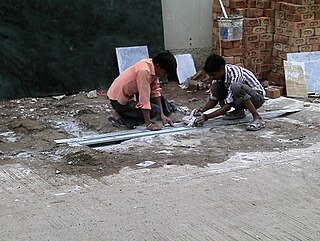
Hearing conservation programs are designed to prevent hearing loss due to noise. Hearing conservation programs require knowledge about risk factors such as noise and ototoxicity, hearing, hearing loss, protective measures to prevent hearing loss at home, in school, at work, in the military and, and at social/recreational events, and legislative requirements. Regarding occupational exposures to noise, a hearing conservation program is required by the Occupational Safety and Health Administration (OSHA) "whenever employee noise exposures equal or exceed an 8-hour time-weighted average sound level (TWA) of 85 decibels (dB) measured on the A scale or, equivalently, a dose of fifty percent." This 8-hour time-weighted average is known as an exposure action value. While the Mine Safety and Health Administration (MSHA) also requires a hearing conservation program, MSHA does not require a written hearing conservation program. MSHA's hearing conservation program requirement can be found in 30 CFR § 62.150, and is very similar to the OSHA hearing conservation program requirements. Therefore, only the OSHA standard 29 CFR 1910.95 will be discussed in detail.

The Safe-in-Sound Excellence in Hearing Loss Prevention Award is an occupational health and safety award that was established in 2007 through a partnership between the National Institute for Occupational Safety and Health (NIOSH) and the National Hearing Conservation Association (NHCA). In 2018, the partnership was extended to include the Council for Accreditation in Occupational Hearing Conservation (CAOHC).

Occupational hearing loss (OHL) is hearing loss that occurs as a result of occupational hazards, such as excessive noise and ototoxic chemicals. Noise is a common workplace hazard, and recognized as the risk factor for noise-induced hearing loss and tinnitus but it is not the only risk factor that can result in a work-related hearing loss. Also, noise-induced hearing loss can result from exposures that are not restricted to the occupational setting.

World Hearing Day is a campaign held each year by Office of Prevention of Blindness and Deafness of the World Health Organization (WHO). Activities take place across the globe and an event is hosted at the World Health Organization on March 3. The campaign's objectives are to share information and promote actions towards the prevention of hearing loss and improved hearing care. The first event was held in 2007. Before 2016 it was known as International Ear Care Day. Each year, the WHO selects a theme, develops educational materials, and makes these freely available in several languages. It also coordinates and reports on events around the globe. Individuals and communities involved in hearing care are encouraged to organize activities to raise awareness about the importance of ear and hearing care and encourage them to seek services.

AirPods Pro are wireless Bluetooth in-ear headphones designed by Apple, initially released on October 30, 2019. They are Apple's mid-range wireless headphones, sold alongside the base-level AirPods and highest-end AirPods Max.

The Over-the-Counter Hearing Aid Act of 2017 was a law passed by the 115th United States Congress as a rider on the FDA Reauthorization Act of 2017. It created a class of hearing aids regulated by the Food and Drug Administration (FDA) available directly to consumers without involvement from a licensed professional. Regulations for this new class of hearing aid are expected to be released by the end of 2020.
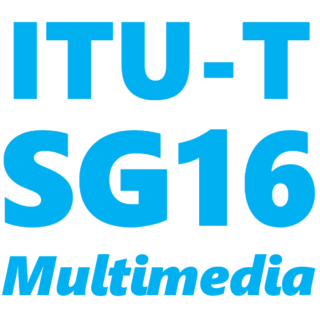
The ITU-T Study Group 16 (SG16) is a statutory group of the ITU Telecommunication Standardization Sector (ITU-T) concerned with multimedia coding, systems and applications, such as video coding standards. It is responsible for standardization of the "H.26x" line of video coding standards, the "T.8xx" line of image coding standards, and related technologies, as well as various collaborations with the World Health Organization, including on safe listing (H.870) accessibility of e-health (F.780.2), it is also the parent body of VCEG and various Focus Groups, such as the ITU-WHO Focus Group on Artificial Intelligence for Health and its AI for Health Framework.
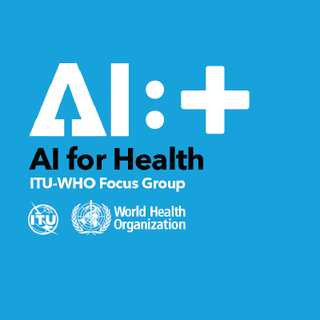
The ITU-WHO Focus Group on Artificial Intelligence for Health is an inter-agency collaboration between the World Health Organization and the ITU, which created a benchmarking framework to assess the accuracy of AI in health.

Safe listening is a framework for health promotion actions to ensure that sound-related recreational activities do not pose a risk to hearing.

Simão Ferraz de Campos Neto is a Brazilian telecommunication engineer, serving as the Counsellor of ITU-T Study Group 16 and of the ITU/WHO Focus Group on Artificial Intelligence for Health (FG-AI4H) and manages the development of multimedia-related technical standards in the Telecommunication Standardization Bureau of the International Telecommunication Union.


















